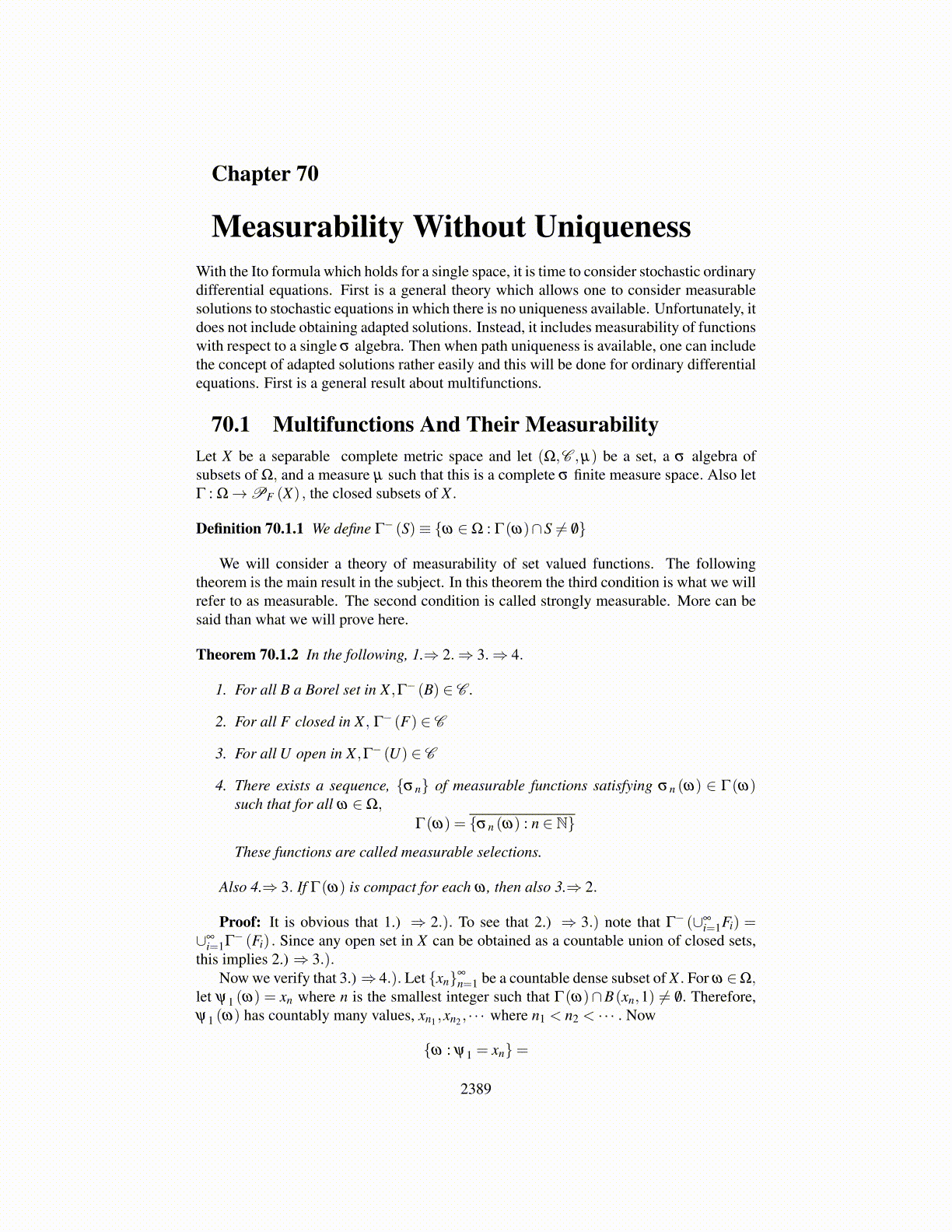
69.5. SOME IMBEDDING THEOREMS 2389
From Theorem 69.5.2 if ε > 0, there exists Cε such that
||un (t)−un (s)||pW ≤ ε ||un (t)−un (s)||pE +Cε ||un (t)−un (s)||pX
≤ 2p−1ε (||un (t)||p + ||un (s)||p)+Cε |t− s|p/q
This is substituted in to 69.5.30 to obtain∫ b
a||(un (t)−un (s))||pW ds≤
k
∑i=1
1ti− ti−1
∫ ti
ti−1
∫ ti
ti−1
(2p−1
ε (||un (t)||p + ||un (s)||p)+Cε |t− s|p/q)
dsdt
=k
∑i=1
2pε
∫ ti
ti−1
||un (t)||pW +Cε
ti− ti−1
∫ ti
ti−1
∫ ti
ti−1
|t− s|p/q dsdt
≤ 2pε
∫ b
a||un (t)||p dt +Cε
k
∑i=1
1(ti− ti−1)
(ti− ti−1)p/q∫ ti
ti−1
∫ ti
ti−1
dsdt
= 2pε
∫ b
a||un (t)||p dt +Cε
k
∑i=1
1(ti− ti−1)
(ti− ti−1)p/q (ti− ti−1)
2
≤ 2pεRp +Cε
k
∑i=1
(ti− ti−1)1+p/q = 2p
εRp +Cε k(
b−ak
)1+p/q
.
Taking ε so small that 2pεRp < η p/8p and then choosing k sufficiently large, it follows
||un−un||Lp([a,b];W ) <η
4.
Thus k is fixed and un at a step function with k steps having values in E. Now usecompactness of the embedding of E into W to obtain a subsequence such that {un} isCauchy in Lp (a,b;W ) and use this to contradict 69.5.29. The details follow.
Suppose un (t) = ∑ki=1 un
i X[ti−1,ti) (t) . Thus
||un (t)||E =k
∑i=1||un
i ||E X[ti−1,ti) (t)
and so
R≥∫ b
a||un (t)||pE dt =
Tk
k
∑i=1||un
i ||pE
Therefore, the {uni } are all bounded. It follows that after taking subsequences k times there
exists a subsequence{
unk
}such that unk is a Cauchy sequence in Lp (a,b;W ) . You simply
get a subsequence such that unki is a Cauchy sequence in W for each i. Then denoting this
subsequence by n,
||un−um||Lp(a,b;W ) ≤ ||un−un||Lp(a,b;W )
+ ||un−um||Lp(a,b;W )+ ||um−um||Lp(a,b;W )
≤ η
4+ ||un−um||Lp(a,b;W )+
η
4< η